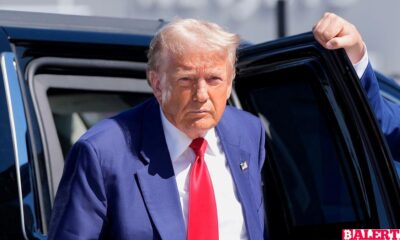Business
The European Union’s Renewable Energy Goals and Wind Power Expansion by 2030
Explore the European Union’s ambitious renewable energy goals and the pivotal role of wind power expansion by 2030. Discover key strategies, challenges, and the impact on sustainable development and climate change.

The European Union’s Ambitious Renewable Energy Goals for 2030
In its quest to significantly reduce carbon emissions, the European Union (EU) has established ambitious renewable energy targets for 2030. In 2022, the European Commission revised its goal of achieving a minimum of 32% of energy production from renewable sources to at least 42.5%, with aspirations to reach as high as 45%. While the EU has been steadily increasing its renewable energy capacity—surpassing the previous target of 20% by 2020—the bloc still faces considerable challenges ahead.
As per the latest available data, the current share of renewables in Europe’s energy production stands at 23%. This indicates that the EU will need to nearly double its renewable energy capacity in less than six years to meet the new targets set for 2030.
The Efficiency of Wind Energy
In addressing these targets, the enhancement of wind energy is a major focus, as it is regarded as one of the most efficient sources of renewable power. According to Giles Dickson, CEO of WindEurope, “You get more bang for your buck from one unit of wind capacity than one unit of solar capacity.” This is largely due to the fact that wind turbines emit less CO2, consume less energy in their production process, and yield more overall energy compared to solar panels. In fact, a single wind turbine can generate the same amount of electricity as approximately 48,704 solar panels.
Solar panels, however, have a limitation: they do not produce energy at night. Dickson elaborates, “Solar PV has an average capacity factor of just 20%, even in sunny countries like Spain or Italy, because they produce no energy at night.” Thus, the comparative efficiency of wind power becomes evident.
The Role of Wind Power in EU Electricity Generation
In 2022, wind power represented over one-third of the total electricity generated from renewable sources within the EU. Notably, for the first time, the combined electricity generation from wind and solar PV surpassed that from both gas and nuclear sources. Wind energy alone accounted for more than 16% of the total electricity needs of the EU that year.
The contribution of wind power to each country’s energy production varied widely across member states. Only eight nations surpassed the EU’s average of 16%, with Denmark leading the way. Remarkably, this small Scandinavian country met over half of its electricity demands in 2022 through wind energy. Following Denmark, Ireland sourced 34% of its electricity from wind. Germany, housing Europe’s largest wind turbine park, and Portugal tied for third place, each covering 26% of their energy requirements through wind power.
In 2023, Ireland achieved a remarkable milestone, with wind turbines supplying 70% of the island’s electricity for over 11 consecutive hours. Portugal also celebrated a significant achievement in the same year, maintaining renewable energy production that exceeded its consumption needs by 262 GW for 149 consecutive hours.
National Contributions to Wind Power Development in the EU
Germany emerged as the frontrunner in wind energy production in 2022, boasting a total wind capacity exceeding 66 GW. Spain also played a critical role, with over 29 GW of wind capacity. Together, these two nations accounted for nearly half of the EU’s total wind production capacity, which reached an all-time high of 204.5 GW, representing more than 23% of global capacity.
During 2022, the EU saw a 47% increase in new wind installations, adding an impressive 16 GW of wind power capacity. However, this figure still falls short of the EU’s green energy goals for 2030, which aim for wind energy to constitute 35% of all electricity consumption by that year, and over half by 2050.
To achieve these objectives, the EU must expand its wind energy production capacity to 420 GW by 2030, necessitating the addition of at least 30 GW of wind capacity each year. In 2022, Germany, Sweden, and Finland led in onshore wind installations, contributing to 40% of all new setups. Germany also spearheaded offshore farm construction alongside the Netherlands, while France commenced its first large offshore wind farm. Nonetheless, the offshore potential remains largely untapped, with 87% of new installations being onshore.
The Growth of Offshore Wind Energy in the EU
In 2023, the European Union experienced a record year for new offshore wind installations, with wind power now accounting for 19% of all electricity consumed in the region. Dickson noted, “Nearly all of the wind farms built in Europe are equipped with components manufactured within the continent, supporting a robust manufacturing industry with over 250 factories across Europe.”
The Netherlands and France led the charge in offshore wind farm installations, highlighted by the 1.5 GW Hollandse Kust Zuid, recognized as the largest operational offshore wind farm globally. Investments in offshore wind soared in 2023, reaching an unprecedented €30 billion, facilitating the development of 9 GW of new offshore capacity in 2024. This surge followed a period of decline in 2022 when funding dropped to an all-time low of €0.4 billion due to permitting challenges and supply chain difficulties.
In response, the European Commission introduced its Wind Power Package in 2023, aimed at streamlining the permitting process. Over the past 18 months, European nations have implemented more policy and regulatory changes to improve permitting than in the entire preceding decade. Dickson reported a 70% increase in permits awarded in Germany and France last year compared to 2022. This action plan also included measures to finance investments in new factories, infrastructure, and workforce development within the wind energy sector.
Thanks to these new investments, numerous supply chain factories are either under construction or planned in Denmark, the Netherlands, Germany, Spain, and Poland. Dickson emphasized the need to accelerate the permitting process to ensure the timely construction of more wind farms, while also expanding the supply chain and grid infrastructure to effectively connect these farms to energy consumers.
Business
Bhutan’s Strategic Investment in Bitcoin: A New Era for the Himalayan Kingdom
Explore how Bhutan is embracing Bitcoin as a strategic investment, marking a transformative shift for the Himalayan kingdom. Discover the implications of this move on its economy, sustainability, and future in the digital age.

Buddhist Kingdom’s Bold Move into Bitcoin
A stunning landlocked nation nestled between India and China, Bhutan has made headlines by accumulating significant bitcoin (BTC) holdings totaling over $780 million in recent years. This amount represents nearly one-third of the country’s gross domestic product (GDP), positioning Bhutan as the holder of the fourth-largest state-owned stash of BTC, as revealed by the on-chain analytics tool Arkham.
Known for its unique approach to governance, Bhutan emphasizes the happiness of its fewer than 900,000 citizens as a more meaningful metric of well-being than traditional economic indicators. This Himalayan kingdom has become the second nation, following El Salvador, to officially embrace BTC as part of its national strategy, incorporating it into the state-owned Druk Holdings fund.
According to Arkham, Bhutan has established bitcoin mining facilities across various locations, with the most significant operation situated on the site of the now-defunct Education City project. Unlike many governments that acquire BTC through asset seizures related to law enforcement, Bhutan’s holdings have originated from extensive bitcoin mining activities, which have seen a remarkable increase since early 2023.
These mining operations are likely connected to Bitdeer (BTDR), a prominent player in the cryptocurrency mining sector. In 2023, the Singapore-based firm announced its collaboration with the Bhutanese government to develop cryptocurrency mining operations in Southeast Asia, successfully raising over $500 million for this ambitious venture. Following this announcement, Bitdeer disclosed that it had completed the first phase of a 100 megawatt (MW) mining facility.
Looking ahead, Bitdeer announced plans to expand Bhutan’s mining capacity to a staggering 600 MW by 2025, reflecting the growing significance of this initiative.
Despite its small geographic size, even smaller than Switzerland, Bhutan faces challenges such as limited economic diversification and an underdeveloped private sector. The nation primarily relies on sectors like hydropower, tourism, and agriculture to generate revenue. In 2022, Bhutan’s GDP was recorded at just under $3 billion, approximately half that of the Maldives.
To bolster its economy, Druk Holdings is exploring opportunities across various sectors. The organization’s website highlights “digital assets” as a key focus area in its technology-driven investment strategy, which also includes projects in hydropower and emerging digital realms like the metaverse.
Recent activities in the Druk wallets, as monitored by Arkham, indicate a flurry of deposit and withdrawal transactions in recent weeks. The fund has received multiple deposits of up to 2 BTC from Foundry, another mining entity, as well as from other unidentified bitcoin addresses during the past week. Additionally, Druk Holdings has periodically transferred bitcoin to various addresses, including crypto exchanges. One notable transaction from early July involved a transfer of over $25 million worth of BTC sent to the crypto exchange Kraken, suggesting that it was likely sold to capitalize on market conditions.
Business
Bitcoin and Crypto Markets React to Anticipated Federal Rate Cuts
Explore how Bitcoin and cryptocurrency markets are responding to the anticipated Federal rate cuts. Discover the implications for investors and the broader financial landscape in this insightful analysis.
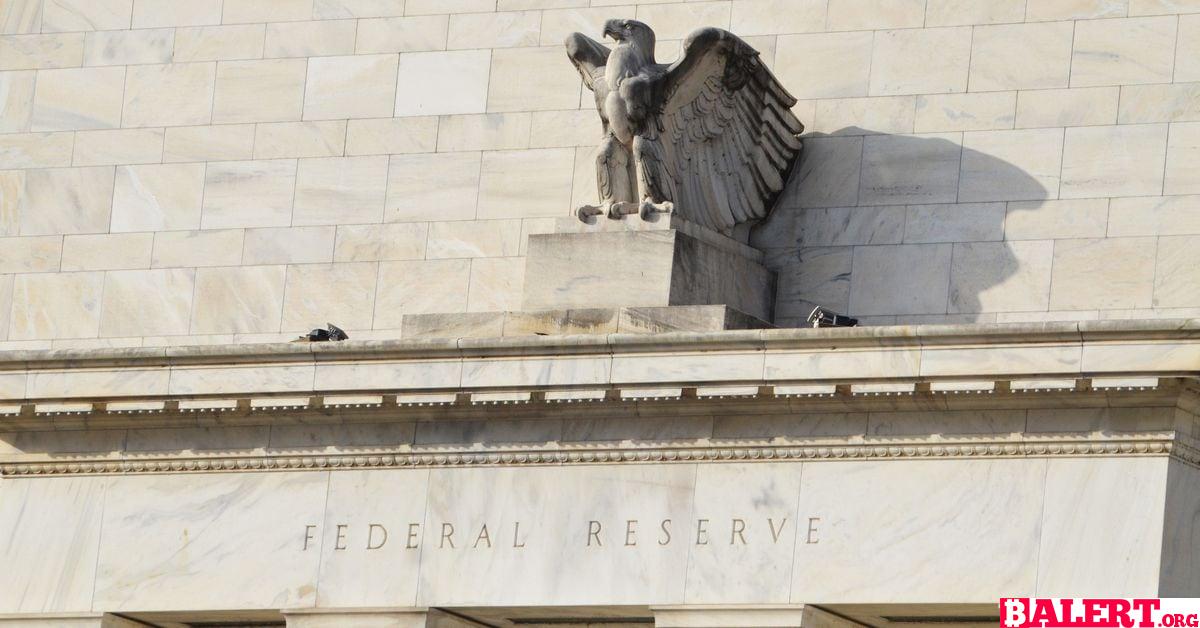
Bitcoin and Crypto Markets Await Federal Rate Cuts
Bitcoin (BTC) and the broader cryptocurrency markets have seen minimal fluctuations over the past 24 hours as traders remain cautious ahead of the upcoming Federal Open Market Committee (FOMC) meeting on Wednesday. This meeting is particularly significant, as officials are anticipated to announce the first interest rate cuts in four years. Currently, Bitcoin is trading just below $58,500, specifically at $58,480, reflecting a relatively stable performance. The CoinDesk 20 (CD20), a benchmark for the largest digital assets, has experienced a slight increase, trading above the 1,800 mark.
In terms of daily activity, inflows into Bitcoin exchange-traded funds (ETFs) have amounted to $12.9 million, with a substantial portion directed towards BlackRock’s IBIT. Analysts widely expect the Fed to unveil a rate cut on September 18, signaling the beginning of a potential easing cycle that has historically provided support for risk assets, including Bitcoin.
As of Tuesday morning in Asia, the 30-Day Fed Funds futures prices indicate that traders perceive a 67% likelihood of a significant 50 basis points rate cut, bringing the target range to 4.7%-5%. This is an increase from Monday’s implied probability of 50% and a notable rise from the 25% probability reported a month ago. On Polymarket, traders are assigning a 57% chance of a decrease exceeding 50 basis points, alongside a 41% chance of a 25 basis points cut.
Meanwhile, the overall market remains relatively stable. Noteworthy movements have been observed, such as XRP rising by 3.5%, SUI increasing by 2.5%, and Fantom’s FTM surging by 10.5%, buoyed by positive market sentiment surrounding its forthcoming rebranding to Sonic.
Trump’s World Liberty Financial to Introduce WLFI Token
In other news, the team behind World Liberty Financial, a project receiving endorsement from former President Donald Trump and his family, has announced the launch of a governance token. However, it is crucial to note that this token will only be available to accredited U.S. investors. During a livestream that lasted over two hours, the team highlighted that the token is intended for governance participation rather than for economic profit and did not disclose a specific launch date during the X Spaces stream.
Throughout the livestream, Trump himself did not specifically mention the token or provide an endorsement. Instead, he reiterated his general views on cryptocurrency policy, much of which echoed his previous public statements, including those made at the recent Bitcoin Conference held in Nashville.
Figure Markets Launches Exchange with Real Estate-Backed Yields
In a groundbreaking development within the crypto space, Figure Markets has announced the launch of its exchange, coinciding with the Token2049 event in Singapore. Founded by Mike Cagney, a co-founder of SoFi, Figure Markets introduces an innovative method for generating yields for users who store their cryptocurrency on the platform.
According to a recent release, Figure Markets claims it can offer returns of up to 8% for non-USD and stablecoin balances. This is achieved by leveraging a fund backed by real-world assets, particularly home equity loans. The operational model involves traders depositing their funds into Figure Markets, which are then pooled and lent to Figure Technologies for the issuance of secured home equity loans. The interest paid by borrowers on these loans creates a spread that not only covers operational costs but also provides returns to investors. These investors benefit from dual recourse protections, daily liquidity, and interest payments that accrue based on the duration of their investments.
While Real World Assets (RWAs) are progressively becoming a noteworthy aspect of the cryptocurrency industry, there are still very few applications that seek to derive yield from these assets to support their operations. Prior to the launch of Figure in 2023, Cagney had withdrawn the company’s bid for a U.S. federal bank charter amid regulatory scrutiny, opting instead to pursue partnerships with established banks.
Business
Meta Bans Russian Media Outlets Amid Disinformation Concerns
In response to rising disinformation concerns, Meta has imposed bans on several Russian media outlets. This decision highlights the ongoing battle against misinformation and the platform’s commitment to ensuring accurate information for its users.
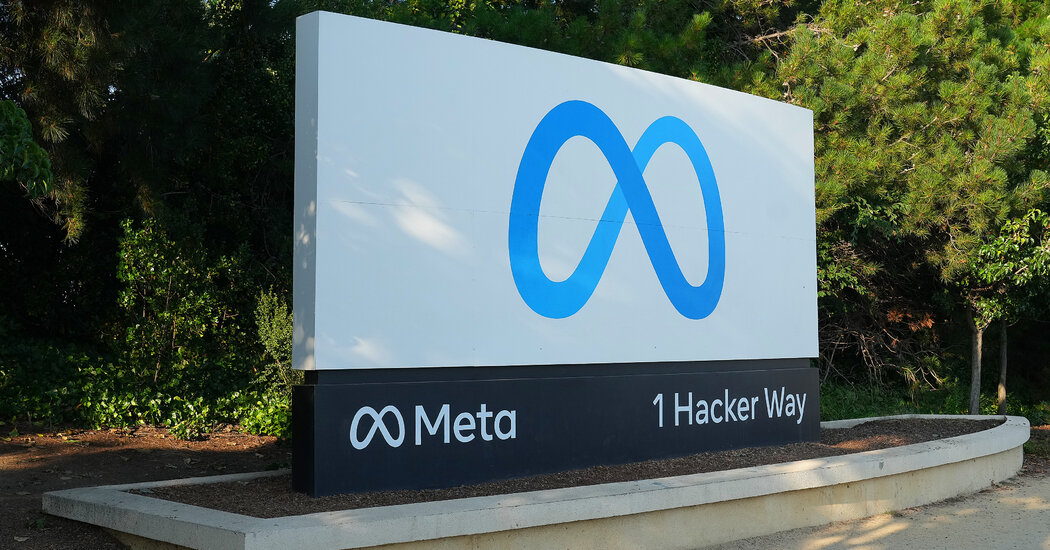
Meta Takes Strong Action Against Russian Media Outlets
On Monday, Meta announced a significant initiative to prohibit Russian media outlets, including the state-funded television network RT, from utilizing its platforms. This decision comes in light of ongoing scrutiny in the United States regarding these outlets’ involvement in covert influence campaigns designed to manipulate online discourse across various social media platforms.
Meta, the parent company of popular applications such as Facebook, Instagram, and WhatsApp, stated that the ban would be implemented in the coming days. This decisive action marks an escalation in the ongoing efforts to combat Russian state media actors, which U.S. intelligence officials have identified as key players in disinformation operations that span the globe, infiltrating the world’s largest social networking sites.
In a formal statement, Meta expressed, “After thorough consideration, we have expanded our current enforcement measures against Russian state media outlets. Rossiya Segodnya, RT, and other related entities are now prohibited from our applications worldwide due to their involvement in foreign interference activities.”
Recently, U.S. authorities have tightened their grip on RT, particularly for its attempts to meddle in the upcoming presidential election scheduled for November. On Friday, the United States, in conjunction with Canada and Britain, accused RT of functioning as a conduit for Russian intelligence agencies. They announced new sanctions aimed at curtailing international funding sources that support disinformation campaigns globally.
This crackdown follows the federal indictment of two RT employees, who allegedly funneled at least $9.7 million to finance American podcasters on Tenet Media, a video-streaming service based in Tennessee. The goal was to amplify the Kremlin’s propaganda and undermine the integrity of the American democratic process.
Secretary of State Antony J. Blinken emphasized the broader implications of these tactics, stating, “We’re revealing how Russia employs similar strategies globally.” He further noted, “The Russian weaponization of disinformation to destabilize and polarize free and open societies is a challenge that impacts every corner of the world.”
-
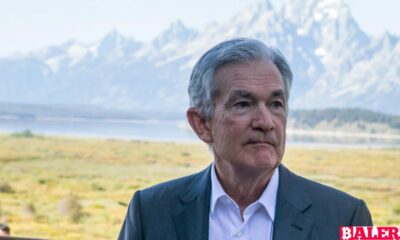
 Business7 months ago
Business7 months agoThe Significance of Jackson Hole: A Central Banking Tradition
-

 Tech6 months ago
Tech6 months agoNew Leaks and Features About the Samsung Galaxy S25 Ultra
-

 Article9 months ago
Article9 months agoCreative Design Applications Developed with Artificial Intelligence
-

 Business6 months ago
Business6 months agoBhutan’s Strategic Investment in Bitcoin: A New Era for the Himalayan Kingdom
-
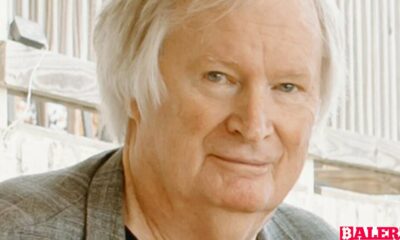
 Business8 months ago
Business8 months agoObituary: Dan Collins
-
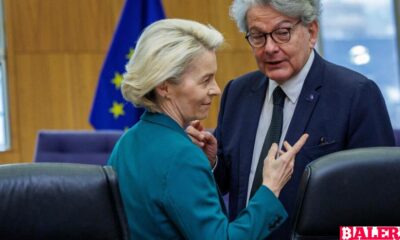
 World6 months ago
World6 months agoThierry Breton Resigns: Impact on European Union Leadership
-

 Gaming6 months ago
Gaming6 months agoNew Details and Trailer Released for Dead Rising Deluxe Remaster
-

 Gaming6 months ago
Gaming6 months agoNew Details for Alan Wake 2 and PlayStation 5 Pro Announcement







